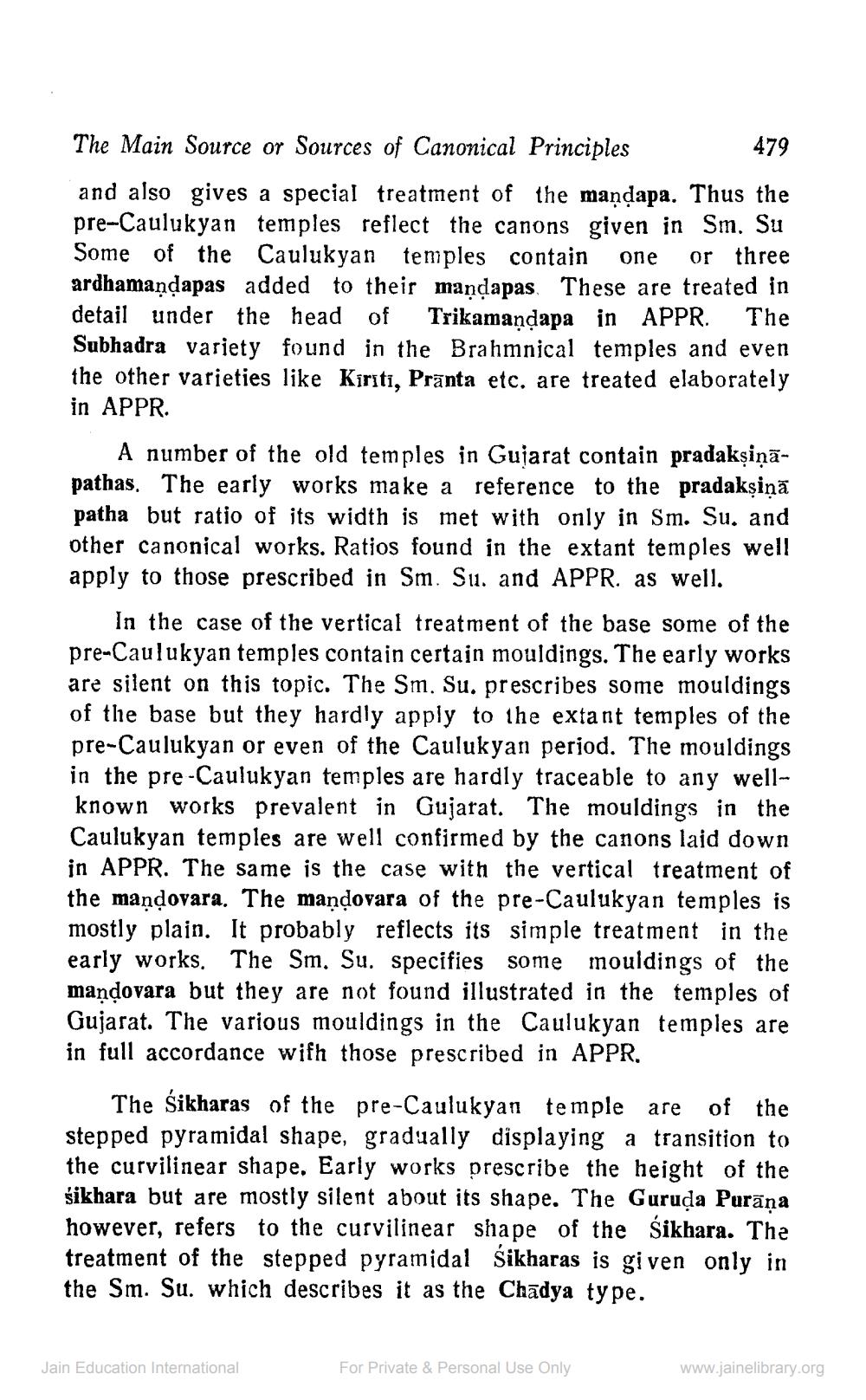________________
479
The Main Source or Sources of Canonical Principles
and also gives a special treatment of the mandapa. Thus the pre-Caulukyan temples reflect the canons given in Sm. Su Some of the Caulukyan temples contain one or three ardhamaṇḍapas added to their mandapas These are treated in detail under the head of Trikamaṇḍapa in APPR. The Subhadra variety found in the Brahmnical temples and even the other varieties like Kiriti, Pranta etc. are treated elaborately in APPR.
A number of the old temples in Gujarat contain pradakṣiņāpathas. The early works make a reference to the pradakṣiņā patha but ratio of its width is met with only in Sm. Su. and other canonical works. Ratios found in the extant temples well apply to those prescribed in Sm. Su. and APPR. as well.
In the case of the vertical treatment of the base some of the pre-Caulukyan temples contain certain mouldings. The early works are silent on this topic. The Sm. Su. prescribes some mouldings of the base but they hardly apply to the extant temples of the pre-Caulukyan or even of the Caulukyan period. The mouldings in the pre-Caulukyan temples are hardly traceable to any wellknown works prevalent in Gujarat. The mouldings in the Caulukyan temples are well confirmed by the canons laid down in APPR. The same is the case with the vertical treatment of the mandovara. The maṇḍovara of the pre-Caulukyan temples is mostly plain. It probably reflects its simple treatment in the early works. The Sm. Su. specifies some mouldings of the maṇḍovara but they are not found illustrated in the temples of Gujarat. The various mouldings in the Caulukyan temples are in full accordance with those prescribed in APPR.
The Sikharas of the pre-Caulukyan temple are of the stepped pyramidal shape, gradually displaying a transition to the curvilinear shape. Early works prescribe the height of the sikhara but are mostly silent about its shape. The Guruḍa Purāṇa however, refers to the curvilinear shape of the Sikhara. The treatment of the stepped pyramidal Sikharas is given only in the Sm. Su. which describes it as the Chadya type.
Jain Education International
For Private & Personal Use Only
www.jainelibrary.org




